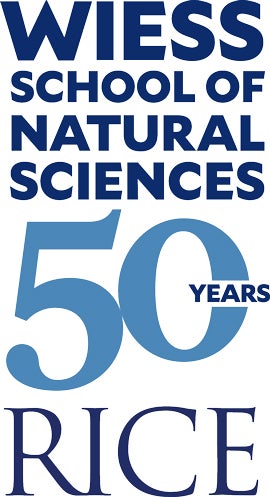
When Raúl Hernández Sánchez was eight years old, he watched Santo vs. the Zombies . But while most kids were focused on the masked wrestler as he faced off against the undead, he found himself transfixed by what was going on in the background. “There was always a lab filled with fuming stuff, and I was always wondering what was going on in there,” he said. “I knew, just by looking at them, that was what I wanted to do when I grew up.”
Today, Hernández Sánchez leads his own lab at Rice University, where he merges supramolecular and materials chemistry to solve one of the world’s most pressing environmental challenges: PFAS contamination.
Often referred to as “forever chemicals,” per- and polyfluoroalkyl substances (PFAS) are a group of widely used synthetic compounds that resist degradation and accumulate in the environment. PFAS are linked to numerous health risks, including cancer, developmental issues and immune dysfunction, and have been detected in rain, soil and even human blood. Their widespread and persistent presence makes PFAS contamination an increasingly urgent issue. “Just because we don’t have the data everywhere doesn’t mean the chemicals aren’t there,” Hernández Sánchez said. “They’re global.”
PFAS became a compelling target for the Hernández Sánchez research group when they discovered that one of their custom macrocycles — a large, ring-shaped molecule — could tightly bind to the contaminant’s ionic head groups. The structure, shaped like a molecular basket, was originally developed for other host-guest interactions. However, when the group realized its potential to trap PFAS molecules, it completely shifted the project’s trajectory. “The cavity fit them perfectly,” Hernández Sánchez explained. “That’s when we started thinking about environmental applications.”

Motivated by this discovery, the group developed a polymer version of the molecule that can be embedded into porous materials to create targeted water filtration systems. When water passes through the material, the polymer selectively captures PFAS molecules, leaving clean water behind. Early experiments show the material can filter up to 5,000 liters per pound — enough to supply a household’s drinking water for an entire year. “You’d still use traditional methods to remove metals or VOCs,” Hernández Sánchez said, “but this would be an added layer to catch the PFAS most filters miss.”

However, there are still some challenges the group is seeking to solve in the future. “Right now, we haven’t found a way to regenerate the polymer after it binds PFAS,” Hernández Sánchez said. “We’re working on making the material reusable and scalable.”
While PFAS is a major focus of their work, the Hernández Sánchez group also designs other functional molecules, including highly contorted aromatic systems and metal cluster catalysts. Across all projects, however, the lab uses a design-first approach to chemistry that balances fundamental chemistry with real-world impact. “We’re molecular architects, “ Hernández Sánchez said, explaining that they seek to push the boundaries of what is possible at the molecular level in pursuit of novel properties and applications at the macromolecular stage. “With PFAS, the relevance was immediate,” he said. “Once we saw that binding was possible, it made sense to pursue the environmental angle.”
For Hernández Sánchez, mentorship is also a core part of his work, and he finds meaning in watching students grow. “Every small success — a synthesis that works, an acceptance letter — it all feels like a win. They’re learning how to think like scientists.”
By engineering molecules that can selectively trap some of the most persistent pollutants on the planet, the Hernández Sánchez group is at the forefront of environmental chemistry and molecular design, working towards a future where clean water is accessible to communities around the world.
— by Niamh Ordner ’26

